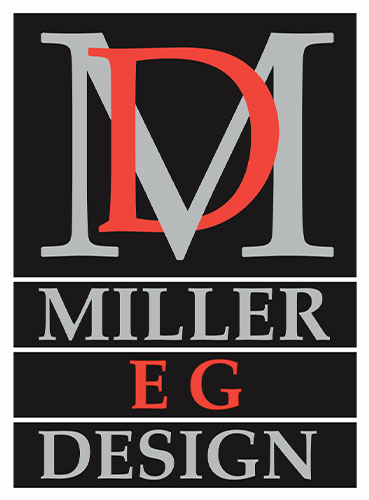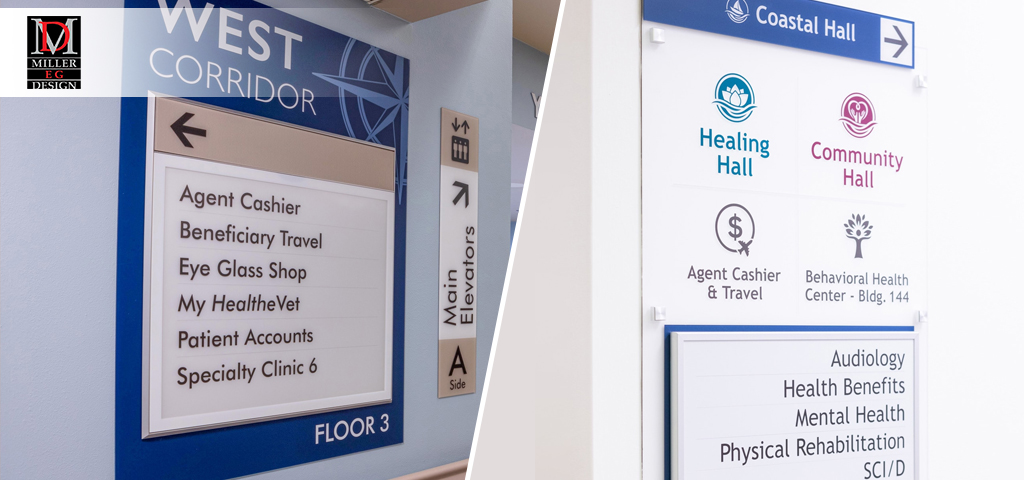You’ve probably been there. A crowded hospital, a government building, or even a senior living center—and for a moment, you feel disoriented. You can’t figure out where to go, what sign to follow, or how to get from point A to point B. Now imagine feeling that every single day. That’s the reality for vulnerable populations—seniors, individuals with cognitive or physical disabilities, and people with language or sensory processing challenges. For them, poor signage and confusing spaces aren’t just frustrating—they’re barriers to dignity, safety, and independence.
At Miller EG Design, we believe signage isn’t just about direction—it’s about inclusion. Spatial clarity isn’t a luxury; it’s a necessity for people who are often overlooked in the design process. Whether it’s navigating a medical facility, public housing, school campus, or community center, clear visual cues and thoughtfully placed signage can make all the difference.
Cluttered hallways. Overwhelming visual noise. Inconsistent wayfinding. These issues may seem minor to the average person, but for those with visual impairments or cognitive differences like dementia or autism, they can turn a routine visit into a crisis. Environments that lack spatial logic can increase anxiety, reduce independence, and even pose safety risks. That’s where human-centered design comes in—when every sign, symbol, and space is made with empathy.
Supporting vulnerable populations starts with asking the right questions: Can a non-native speaker understand this message at a glance? Will someone in a wheelchair or with low vision be able to spot and reach this sign? Is there visual consistency that builds confidence from entry to exit? At Miller EG Design, these aren’t just checkboxes—they’re central to every project we take on.
We apply universal design principles to develop environments that work for everyone—not just the average user. This means using high-contrast, tactile materials; ensuring typefaces are large and legible; and providing intuitive layouts that don’t require constant assistance. When possible, we integrate visual hierarchies and symbolic graphics to help bridge language or literacy gaps.
Wayfinding should not rely solely on words. Symbols, colors, and textures can do powerful work when implemented correctly. For individuals with cognitive disabilities or sensory sensitivities, a bright, overstimulating environment can quickly become overwhelming. But by controlling contrast, light, and spacing—and layering in clear, simple directional cues—we create spaces that reduce stress, foster autonomy, and promote engagement.
Too often, accessibility is tacked on at the end of a project. We challenge that. Our process integrates accessibility and inclusion from the very beginning. And that doesn’t mean sacrificing design. On the contrary—it means refining it. Clean, readable, beautiful signage can elevate the look of your space and serve everyone who walks through your door.
This isn’t just about ADA compliance (though that’s important). It’s about dignity. When a person can move through a space confidently, without asking for help or feeling lost, it empowers them. It tells them, “You belong here.” And that message matters—especially for those who’ve spent their lives navigating systems that haven’t always considered their needs.
Whether you’re designing for a hospital, school, senior center, behavioral health facility, or public service building, it’s time to ask: Are we doing enough? Are we designing for the most vulnerable users in our community? Because when we do that, everyone benefits. Better signage and spatial clarity create safer, more welcoming, and more efficient spaces—not just for those who need it most, but for all.
If you’re ready to design with empathy and impact, let’s start a conversation. Miller EG Design specializes in crafting signage systems and spatial environments that support accessibility, dignity, and usability for all people. Visit us at 315 Northpoint Pkwy SE, Suite F, Acworth, GA 30102, or call us at (404) 947-6448 to explore how we can help you create inclusive, purposeful spaces that truly serve your community.

